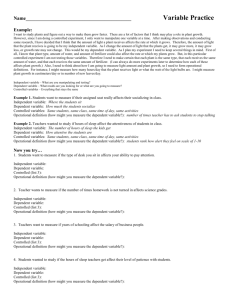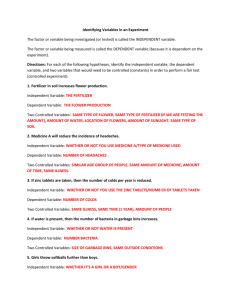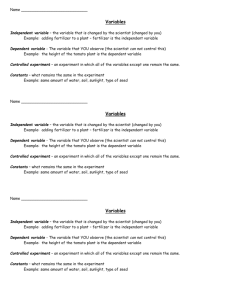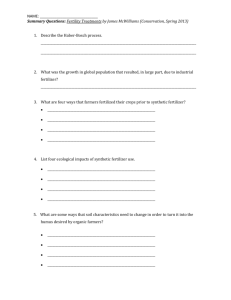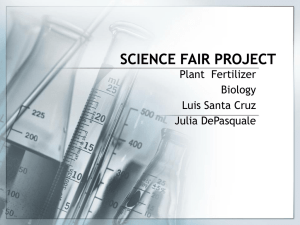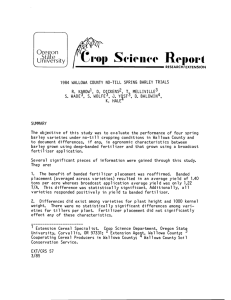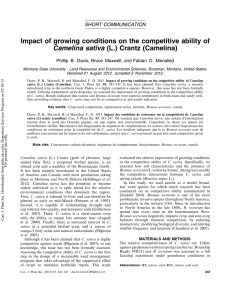Deutscher Tropentag, October 11 - 13, 2005 in Stuttgart
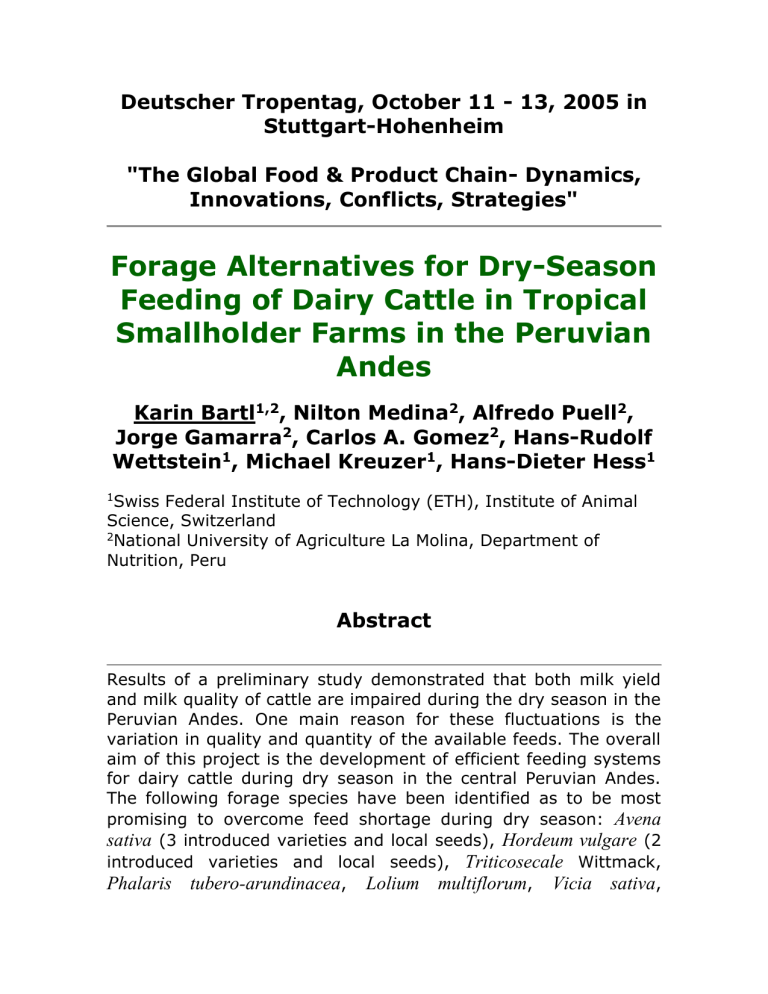
Deutscher Tropentag, October 11 - 13, 2005 in
Stuttgart-Hohenheim
"The Global Food & Product Chain- Dynamics,
Innovations, Conflicts, Strategies"
Forage Alternatives for Dry-Season
Feeding of Dairy Cattle in Tropical
Smallholder Farms in the Peruvian
Andes
Karin Bartl 1,2 , Nilton Medina 2 , Alfredo Puell 2 ,
Jorge Gamarra
Wettstein 1
2 , Carlos A. Gomez 2
, Michael Kreuzer 1
, Hans-Rudolf
, Hans-Dieter Hess 1
1 Swiss Federal Institute of Technology (ETH), Institute of Animal
Science, Switzerland
2 National University of Agriculture La Molina, Department of
Nutrition, Peru
Abstract
Results of a preliminary study demonstrated that both milk yield and milk quality of cattle are impaired during the dry season in the
Peruvian Andes. One main reason for these fluctuations is the variation in quality and quantity of the available feeds. The overall aim of this project is the development of efficient feeding systems for dairy cattle during dry season in the central Peruvian Andes.
The following forage species have been identified as to be most promising to overcome feed shortage during dry season: Avena sativa (3 introduced varieties and local seeds), Hordeum vulgare (2 introduced varieties and local seeds), Triticosecale Wittmack,
Phalaris tubero-arundinacea , Lolium multiflorum , Vicia sativa ,
Medicago sativa . These species have been established in January
2005 in experimental plots at two sites at 3770 m and 3860 m a.s.l. Two fertilizer treatments were applied: (i) no fertilizer and
(ii) fertilizer application according to soil analyses and requirements of plants. The species were established in three replicates per site and fertilizer treatment, and were arranged in a randomized complete block design. Vigour of plants, soil cover, competitiveness against weeds and resistance against frost were evaluated and dry matter yield and contents of protein and neutral detergent fibre were determined. Mean dry matter yields (kg/ha) with and without fertilizer application were 5341 and 3107 for
Avena sativa , 5749 and 2254 for Hordeum vulgare , 6601 and 2472 for Triticosecale Wittmack, 1447 and 560, for Phalaris tuberoarundinacea , 2524 and 903 for Lolium multiflorum , and 1344 and
1175 for Vicia sativa , respectively. Differences in dry matter yield within species by fertilizer treatment and site were significant
(P<0.001) whereas crude protein contents in dry matter were significantly different only between sites (P<0.001). The mean protein yields achieved for the local varieties of Avena and
Hordeum were 465 and 292 kg/ha, with the crude protein contents amounting to 128 and 163 g/kg, respectively. The introduced varieties of Avena and Hordeum showed mean protein yields of
467 and 496 kg/ha, with protein contents of 113 and 126 g/kg, respectively, underlining the superior quality of the introduced varieties of Hordeum.
Keywords: Dairy production, dry season feeding, forage species,
Peru
Contact Address: Hans-Dieter Hess, Swiss Federal Institute of
Technology (ETH), Institute of Animal Science/Animal Nutrition,
ETH-Centre/LFW, 8092 Zürich, Switzerland, e-mail: dieter.hess
inw.agrl.ethz.ch


